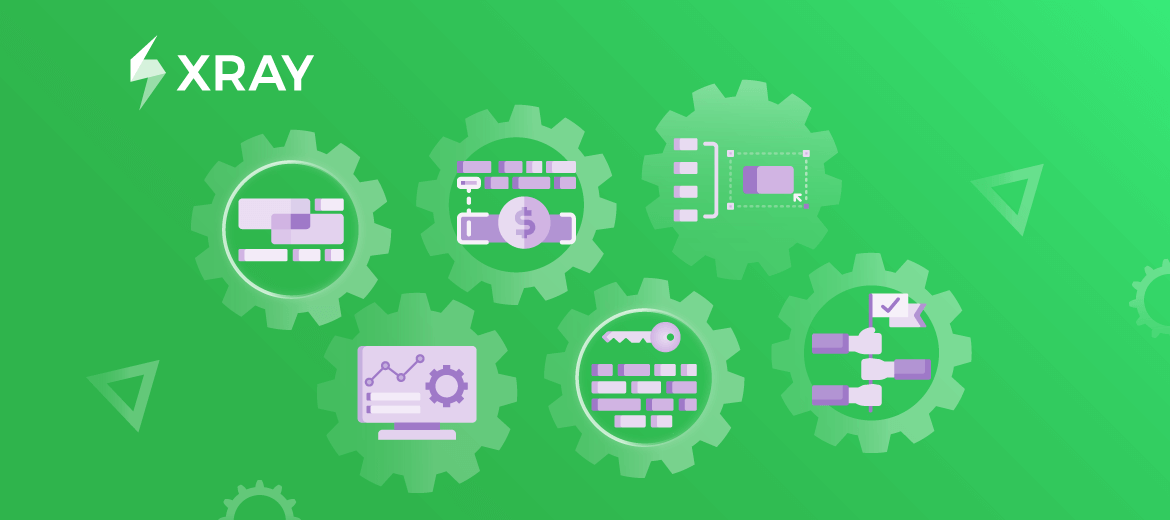Test automation makes testing efforts faster, more reliable and stable. Testing teams use test automation frameworks to ensure the test automation code is reusable, stable, and easy to maintain. A test automation framework encourages the whole team to follow common guidelines for code standards, processes and tools.
Without a framework in place, testing teams may find it difficult to maintain a growing number of test scripts which can lead to low coverage, lack of re-usability and overall a poor effort-to-cost ratio.
Let’s further explore what test automation frameworks are and how you can benefit from them.
What is a test automation framework?
A test automation framework consists of a set of guidelines, practices, and protocols that the entire team can follow in order to reduce maintenance efforts and avoid the costs associated with creating test automation scripts.
This blend of various rules, guidelines, practices, test data injections, concepts, coding standards, project hierarchies, modularity, processes, etc., facilitate the creation and automation of test scripts.
How can your team benefit from a test automation framework
Using a test automation framework is a best practice for any company doing test automation. This is especially helpful when you have developers and testers that are working on different modules of the same software.
Having a framework in place helps avoid situations where every developer applies their own test automation methodology or approach. The main advantages of adopting a test automation framework include scalability, maintenance, reusability of test data, ease of scripting, understandability, and lower cost of coverage.
6 most popular test automation frameworks
There are various test automation frameworks available and will vary based on their functionalities, such as ease of maintenance, reusability, etc.
Here are the 6 most popular test automation frameworks and their benefits.
1. Module Based Testing Framework
A module-based testing framework divides the application to be tested in multiple isolated modules that have a separate and independent test script. These independent test scripts for each module can then be included in a more extensive test script.
Separating the modules is achieved using abstraction so that changes in one section of the application do not generate unnecessary changes in other modules.
Pros:
- A scalable framework that allows a high level of modularization to provide easier and cost-effective maintenance.
- Any changes done in one part of the module will not affect others. Thus, the test script of that part only will be changed without affecting others.
Cons:
- The change in the test data embedded in the test scripts will require manipulations in the test script.
2. Library Architecture Testing Framework
The library architecture testing framework has some additional advantages, built fundamentally and foundationally similar to a module-based testing framework. In the library architecture testing framework, the application is divided into standard functions used in other parts of the application.
Pros:
- It introduces a high level of modularization that allows maintenance and scalability to be easy and cost-effective.
- The framework allows a great degree of reusability by allowing the standard functions to be used by various test scripts.
Cons:
- Since the test data is logged into the test scripts, any change in the test data will manipulate the test scripts.
- The introduction of libraries has made the framework a little challenging to understand.
3. Data-Driven Testing Framework
A data-driven testing framework allows the user to separate test data from test script logic and store the data in an external database with “key-value” pairs. The key is then used to access and use the data in test scripts.
Pros:
- It reduces the number of scripts required to cover all the test scenarios and increases flexibility and maintainability.
- Any change in test data does not affect the test script code. Thus, a single test scenario can execute the changing values of test data.
Cons:
- Data-driven testing is a complex process and requires effort for sourcing test data.
- It requires proficiency in the test script programming language.
4. Keyword-Driven Testing Framework
A keyword driven testing framework is an extension of a data-driven testing framework that segregates test data from test scripts and stores a specific code set (known as a keyword) that belongs to the test script in a separate file. The test data and keywords are stored in tabular format.
Pros:
- Doesn’t require the user to possess scripting language knowledge.
- Allows a single keyword to access multiple test scripts.
Cons:
- Knowledge about keyword creation mechanisms is required to leverage the benefits of the framework efficiently.
- With the introduction of new keywords, handling the framework becomes more complicated.
5. Hybrid Testing Framework
A combination of more than one framework mentioned above is called the hybrid testing framework. Thus, it can leverage the benefits of all the combined frameworks.
The hybrid testing framework’s components and the test case execution are similar to the keyword-driven framework.
The components of the hybrid testing framework are:
- Excel Sheet to store keywords: Keywords created in the library and their description are stored in an excel sheet.
- Test Scripts or Driver script: The main logic to read test cases stored in templates in an excel sheet and then perform appropriate action using library files is stored in the test script.
- Design test case template: According to the framework used, the template is designed accordingly.
- Function library: For each user action, it contains user-defined methods.
- Object repository for elements/locators: All the web page elements are maintained in a separate repository where they are referred to with their name followed by their value.
6. Behavior Driven Development Framework
The behavior driven development framework allows automation of functional validations in a readable and understandable format for testers, developers, business analysts, and other team members of the software development lifecycle.
There are five components of a behavior driven development framework:
- Test data: The input data for test scenarios
- Build tools and continuous integration: Generate test reports, logging information, and email notifications.
- Object repository: Set of locators associated with web elements.
- Generics/ Program logics/ Readers: Classes that store functions.
- Configuration File/ Constants/ Environment Settings: Store information regarding application URL, browser-specific information, etc.
Choose the right test automation framework for your team
Test automation frameworks enhance the speed and efficiency of the entire testing team while reducing maintenance costs and risks. Without a proper framework in place, your team will spend a lot of time on writing and rewriting test automation scripts and spend a lot of time on repetitive effort.
The guidelines provided by a framework can be used to reuse code and create high portability. While choosing a test automation framework, always look for the one that is most flexible and supports a wide range of languages and applications. Of course, it’s important that the whole team understands and is comfortable with the framework in place.
Author Bio
Abdul Rahim has been working in Information Technology for over two decades. He has worked in different roles in Software Testing, Project Management and Account Management. He periodically talks and writes about various topics on Information Technology which varies from tutorials, how-to’s, and troubleshooting tips for various software related problems.





